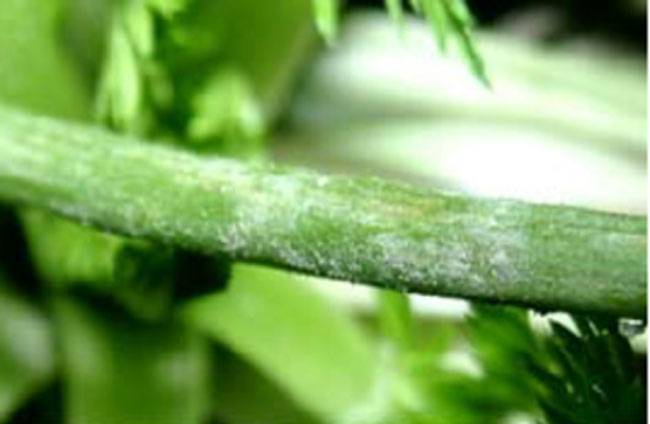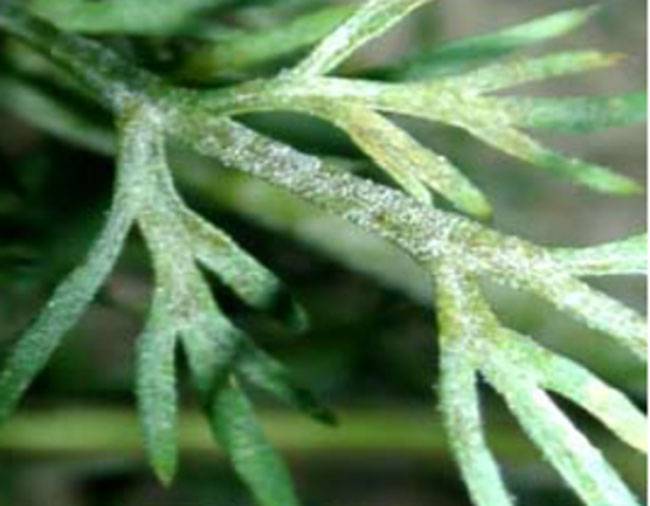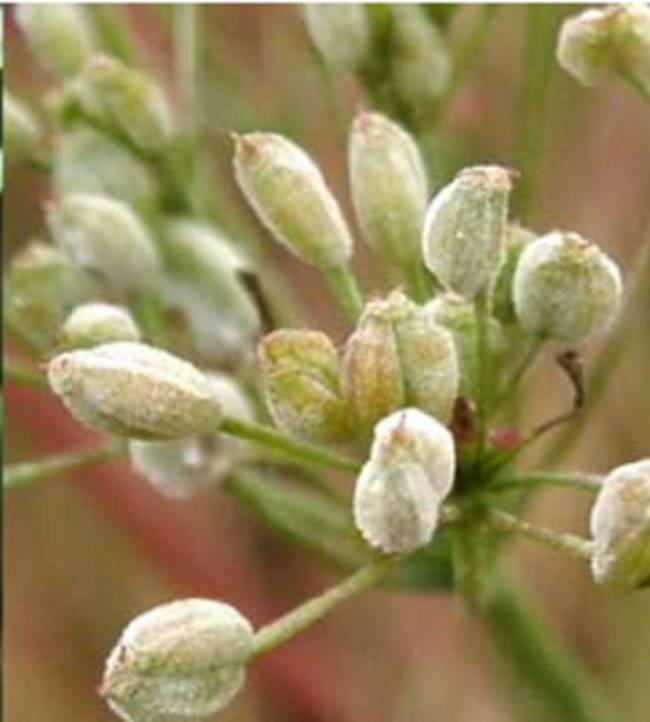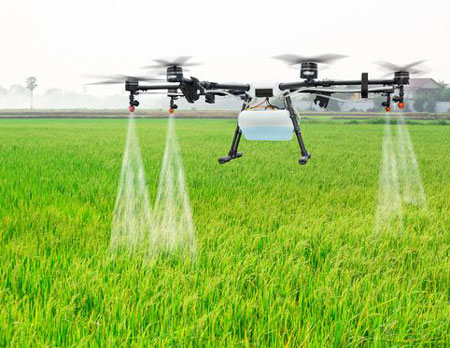Cumin
Powdery Mildew

Erysiphe polygoni
Fungal Disease

Erysiphe polygoni
Fungal Disease

Erysiphe polygoni
Fungal Disease
Powdery mildew, caused by the fungus Erysiphe polygoni, is a critical disease affecting cumin crops, particularly in regions like North Gujarat, where it can lead to significant yield losses. Below is a comprehensive overview of the disease, its symptoms, causes, and management strategies.
1. Introduction to Powdery Mildew
- Pathogen: Erysiphe polygoni.
- Impact:
- Reported losses of 19.1% in North Gujarat (Gohil et al., 1988).
- In severe cases, it may lead to complete crop failure.
- Prevalence:
- Occurs primarily during February-March when the cumin crop is at the flowering stage.
- Favored by cloudy weather and high humidity conditions.
2. Symptoms
- Initial Signs:
- Powdery, white fungal growth appears first on leaves.
- Progression:
- The powdery growth spreads to stems, branches, and flowers.
- Severe infection can result in reduced photosynthesis, weakened plants, and poor seed yield.
3. Disease Cycle
- Primary Infection:
- Occurs through infected soil and seeds carrying the fungal spores.
- Secondary Infection:
- Conidia (fungal spores) are dispersed by rain splashes and wind, spreading the disease across the crop.
4. Favorable Conditions for Disease Development
- Temperature:
- Cool weather with temperatures ranging from 20-25°C.
- Humidity:
- High relative humidity (RH) exceeding 80%.
- Weather:
- Cloudy conditions are highly conducive to the germination of conidia and subsequent disease development.
5. Economic Importance
- Powdery mildew can significantly reduce seed yield and quality.
- Farmers often resort to routine fungicide applications from one month of crop growth to maturity to mitigate losses.




